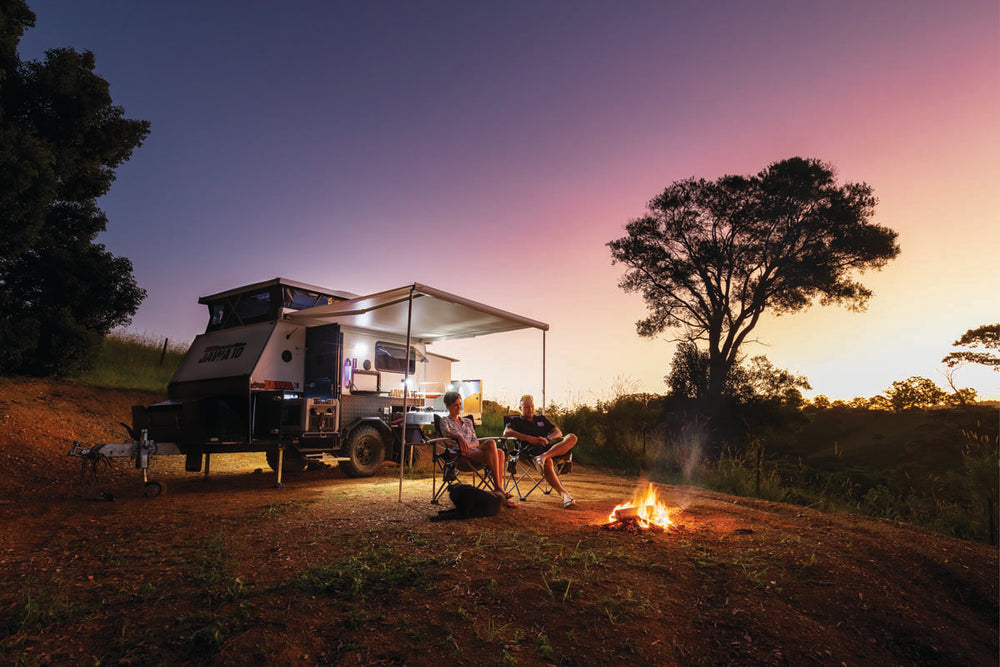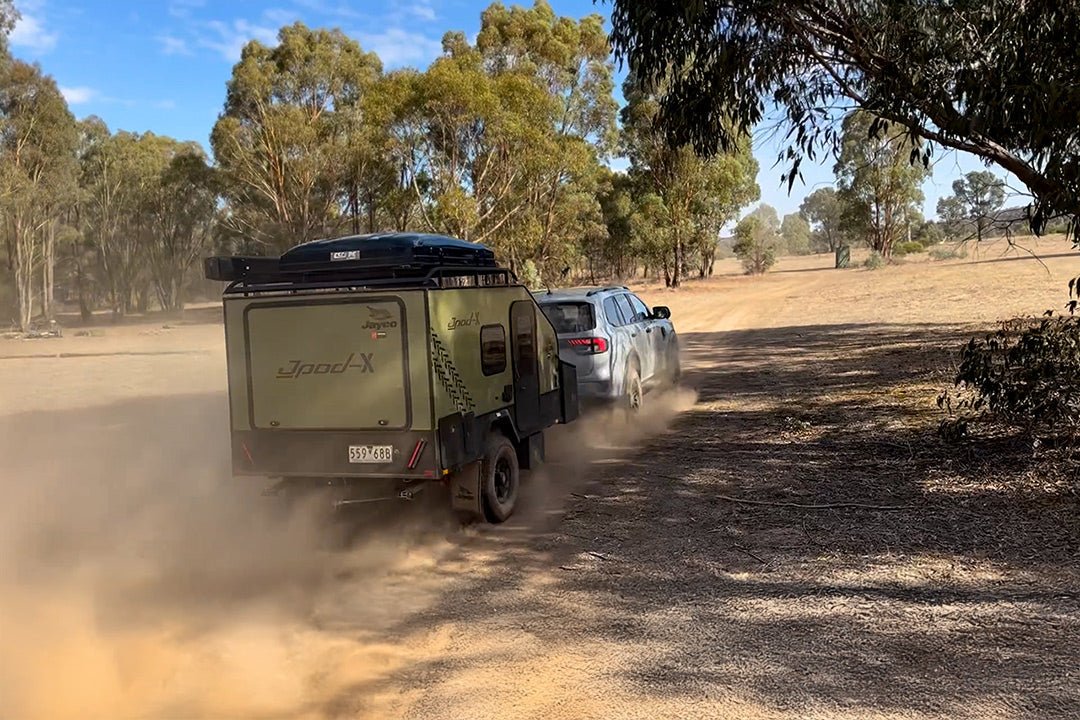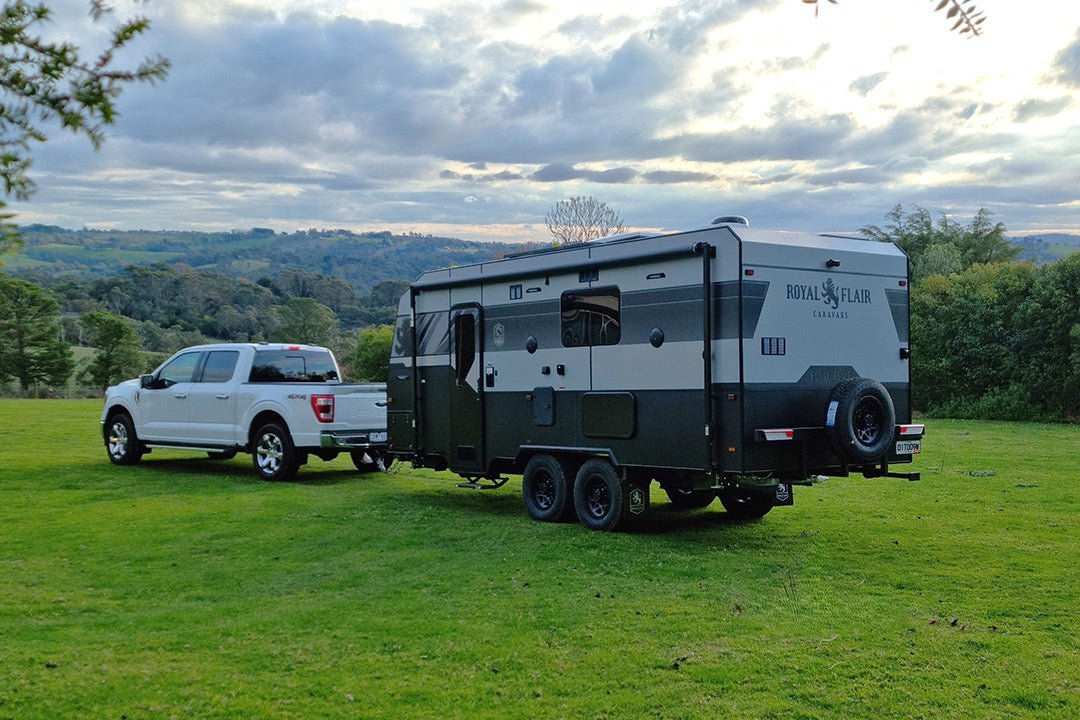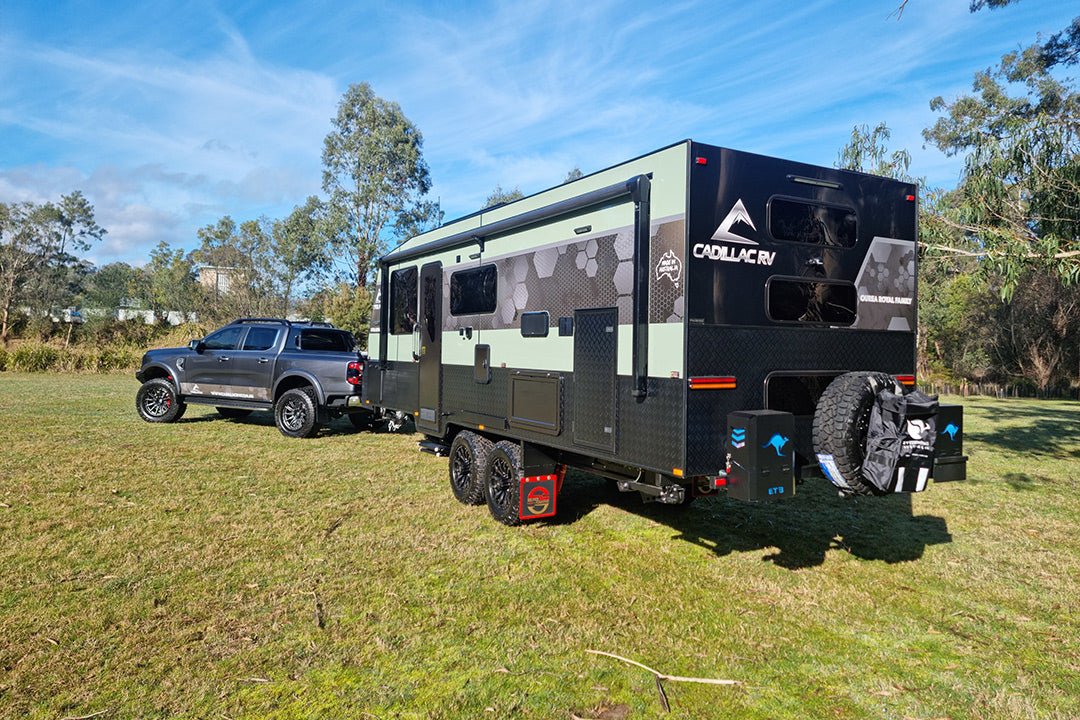South Australia's far west coast
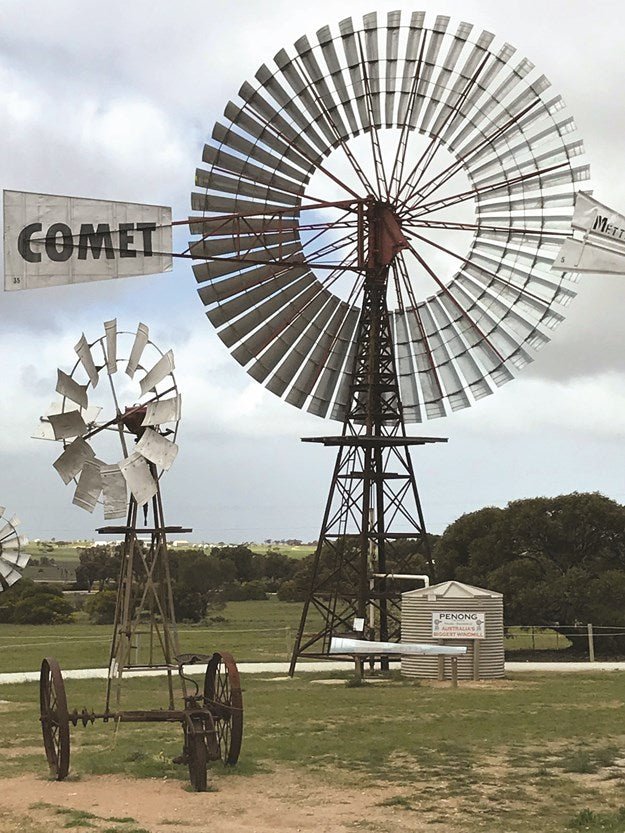
I stopped counting when I saw my 26th whale. There were 13 enormous female whales directly in front of me, their adorable calves in tow, some 100m off the shore. I stopped taking photos and videos when I pressed my camera shutter for the 50th time. But, what I couldn't stop doing was smiling; feeling impressed and awestruck at the same time.
Head of Bight on South Australia’s far west coast is a special place.
It’s quite a drive — 1070km from Adelaide or, in our case, about 14,000km more after a half lap (from Adelaide to Darwin and then west) around Australia. We'd visited the Nullarbor Plain on our travels where we'd already done some whale watching.
But short of being in a boat, there's not much that can beat the passing parade of southern right whales from the shores at Head of Bight.
The official count for whales on the day we visited was 146 in the bay: 62 cows with their calves and 22 adult bulls.
Head of Bight marks the eastern start of the Bunda Cliffs — a 200km stretch of spectacular coastline with 80m cliffs stretching all the way to Border Village on the SA/WA border.
It’s also in the Nullarbor National Park, fronting the Great Australian Bight Marine Park, which is whale heaven.
Southern Right whales come here every year to give birth to and nurture their calves. About 60 calves are born here each year.
These whales breed every three to four years, are pregnant for 12 months, and feed their young for seven to eight months.
That means a different group of females visit each year; word must have been passed around the whale community that Head of Bight is the perfect maternity ward.
Whales arrive in May and in September head back to Antarctica.
MONEY WELL SPENT
There is an entrance fee of $15 for adults and $12 for concessions to Head of Bight. It’s money well spent. Facilities here include a visitors’ centre run by the Aboriginal Lands Trust with great information and helpful guides, toilets, and a boardwalk that leads to a shore-front platform with spectacular views of all the action.
Whales are everywhere. Off in the distance all you see is a spurt of water as they surface to breathe, but many come close to shore. The whales loll about, play, and protect and teach their young.
And the noises are fascinating, both from the whales and humans. We are close enough to hear their flippers slap on the top of waves and, as the whales breathe out, the noise is “like a spectacular snort”, says one visitor.
Conversations among spectators who are gathered here go mostly like this: “Oh, wow, look at that, over there.”
Information boards explain some of the behaviour we are privy to. Rolling on their back like a puppy seeking a scratch is usually a mother trying to get a break from feeding her baby or perhaps thwarting off advances from males.
Breaching is thought to be a means of communicating with other whales, or getting rid of barnacles, or of signifying that the whale is happy. Tail slapping is either attention-seeking or could signify aggression.
Rising vertically out of the water is the whale just checking out what’s going on. It makes you wonder if they are as curious about us as we are about them.
We spent hours there watching the whales. When it was time to drag ourselves away, there were plenty of accommodation options.
There is a free camp at the entrance gate for self-contained travellers. Nullarbor Roadhouse (26km west) and Nundroo (141km east) have powered and unpowered sites for caravans and motorhomes.
We drove 170km further east along the Eyre Highway towards Fowlers Bay, to a bush camp (565 in Camps 9). Despite having lots of room for RVs of all sizes, there were only a few neighbours enjoying secluded sites and a beautiful spot to watch the sun set.
FOWLERS BAY
There are two roads into Fowlers Bay: one is a rough-shod 'bitumen' road that goes through Coorabie and will rattle your fillings loose. The second, which our GPS chooses, is a 4WD-only dirt road. What could possibly go wrong in a heavy, 7m motorhome affectionately nicknamed 'Boof'?
We give it a go, only because the road is wide enough to turn around on if things get too rough. It turned out to be the best dirt road we had so far dared to tackle.
However, I wouldn’t try it after rain as there are patches of low-lying road that might prove to be soggy and impassable.
Fowlers Bay is a tiny town known for its fishing, whale-watching, hikes, massive sand dunes, 4WD tracks, seal colonies and, if you believe the tall tales told around the nightly campfire, some of the biggest squid to be caught anywhere in Australia.
The protected bay offers the chance to get up close and personal with the whales on an EP Cruises boat. A warning though: book ahead for the $95 whale-watching cruises. We missed out and had to be content with the free town telescope perched on a platform overlooking the bay.
Fowlers Bay has a proud history which is presented all over town on information boards and plaques adorning restored buildings.
In 1802, Matthew Flinders explored the bay and named it after lieutenant Robert Fowler, who later become Admiral Fowler. Explorer Edward John Eyre (after whom the highway was named) later used it as a base for his historic journey to Albany. There are tales about whalers and sealers and times when the bay was an active port for grain and wool.
The old telegraph station is now a private home and a kiosk and cafe sit where the general store once stood.
The jetty fishing is not living up to its reputation. Whiting, garfish, tommies and squid, normally in abundance, seem to be on holiday, too. Nearby Scott Bay and Mexican Hat have proved a little more fruitful for anglers with 4WDs.
The caravan park, owned by Simon and Robyn, is the social hub of town. The camp kitchen and fire pit are the place to gather nightly for drinks or coffee and the chance to meet an eclectic group of travellers.
Here it doesn’t matter who you are or what you do, or did, for a living. What does matter is whether you’re willing to share; information is the most important currency. Everyone wants to know where you’ve been and what you’ve seen.
PENONG AND CEDUNA
Penong is next on our radar. We take the gravel coastal road out of Fowlers Bay which changes to bitumen after 10km and joins the Eyre Highway. It’s worth stopping to see Australia’s biggest windmill and the windmill museum.
Just out of Ceduna is the South Australian Quarantine checkpoint where all fruit, vegetables and honey must be surrendered. This pretty coastal town of about 4000 people is the commercial hub for the local farming community, making it easy to restock on supplies.
Ceduna Foreshore Caravan Park is in prime position; straight across from the beach, close to the jetty and right next to the Foreshore Hotel. All the RVs here are packed-in pretty tight but it’s well maintained and a treat to get 32 channels on TV!
SMOKY BAY
The road ahead for us follows part of the Seafood Frontier down the west coast of Eyre Peninsula, along Flinders Highway.
Our destination, just 40km away, is Smoky Bay — a seaside town famous for its oysters and fishing. It’s a tiny town of about 200 residents, with not much more than a general store; an impressive playground; a magnificent jetty with a swimming enclosure; boat ramp and fish cleaning bay; two caravan parks; the local club which is the local pub; lots of holiday homes; and a very big welcome mat.
We are lucky to get a local’s insight into this tiny rural town. Local sheep farmers Lynn and Robert Kelsh, and oyster farmers Di and Kiwi Evans, kindly offered to show us what Smoky Bay is all about and reveal one of its top fishing spots.
For this, we have to park Boof and load up their 4WD with fishing gear, mallee roots and a few other basics for a beach BBQ at Acramans Creek. The trek out through the conservation park is a rough-and-tumble adventure and a lesson in four-wheel-driving among the sand dunes.
Lynn and Robert have been coming here ever since their kids were young and would catch bait fish in jars with bits of bread. Our fishing spot is magical. The creek winds gently around to the beach just beyond some sand dunes and a patch of mangroves.
A seal visits for a lazy loll and pelicans glide in, their long, sweeping landings barely causing a ripple on the quiet waters.
But under that calm surface runs a channel presumably with salmon — and our guides know just when to throw a line. We catch six salmon — but they are just a bonus. The day is more about soaking up the serenity and living like a local.
We learn all about farming, fishing and oyster growing, and get a feel for the strong Smoky Bay community spirit. Everything that gets done here is done by the locals. They see a need, go on a fundraising frenzy and, voila, it’s fixed.
The playground, for example, was built thanks to locals, and the jetty was rejuvenated by locals who bought planks to raise money. This is a stop to be savoured, especially the fresh oysters that can be bought straight out of the sea.
FAST FACTS
Head of Bight
- Free camp at the Head of Bight entrance gate for self-contained travellers
- Nullarbor Roadhouse: $20 unpowered sites/$30 powered
- Nundroo has $20 powered sites/$8 unpowered
- Bush camp near Fowlers Bay (No. 565 in Camps 9)
- The visitors’ centre at Head of Bight and www.headofbight.com.au
Fowlers Bay
- Fowlers Bay Caravan Park: $30 for a powered site
- www.fowlerscaravanpark.com
Ceduna
- Ceduna Foreshore Caravan Park: $30 powered site
- Ceduna Shelly Beach Caravan Park
- Visitor Information Centre at 58 Poynton Street, www.cedunatourism.com.au
Smoky Bay
- Smoky Bay Caravan Park (right by the jetty): $31 powered site
- Baldwin’s (just out of town, perfect for bigger rigs): $25 powered site
- Boat ramp permits available from the general store and caravan park




